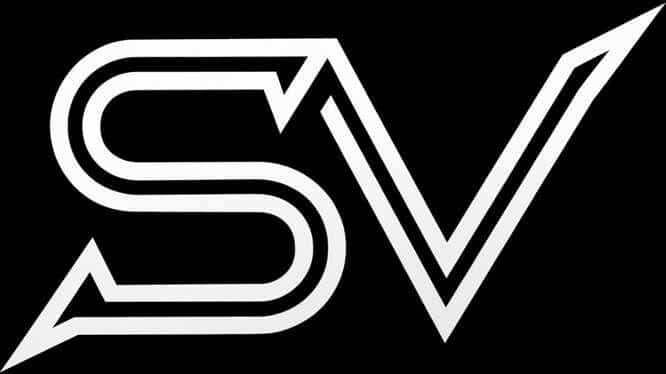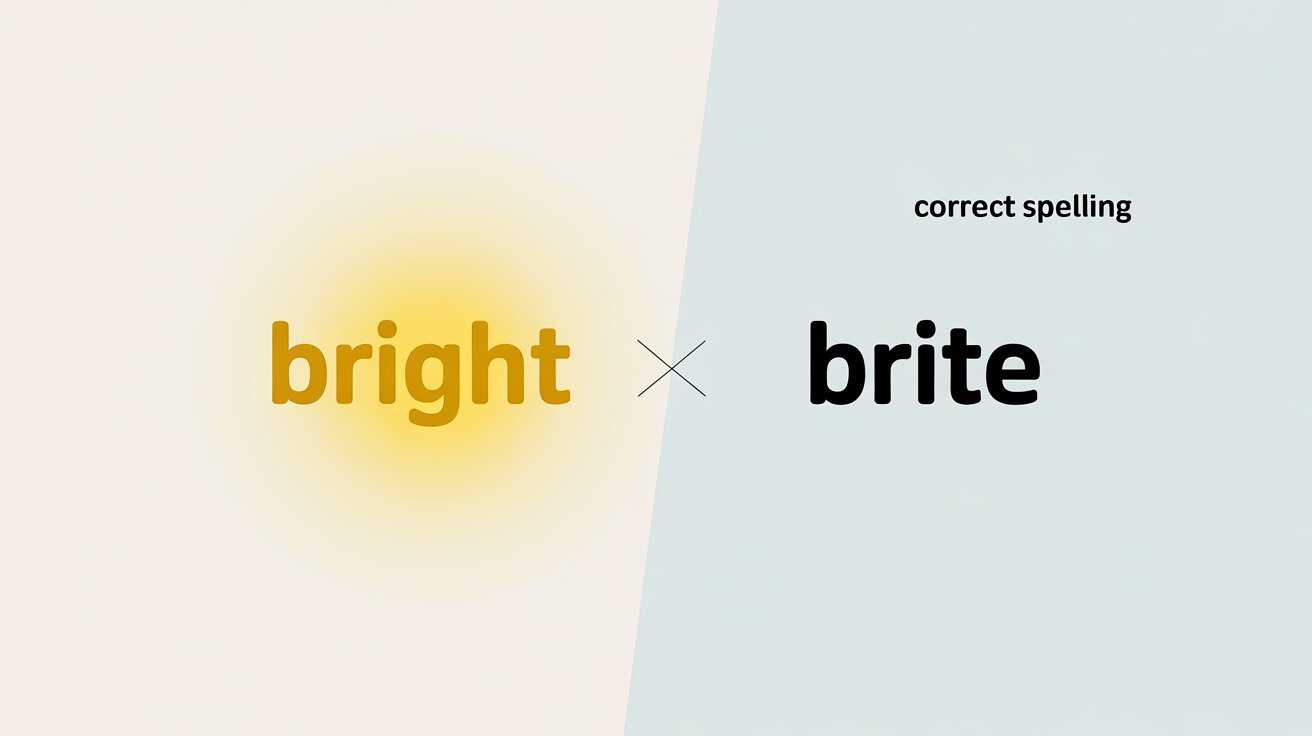If you’ve ever scratched your head over brite vs bright, you’re not alone. These two words often spark confusion because they share identical sounds but don’t hold the same weight in the English language. One is rooted in history, recognized in the dictionary, and seen in formal writing, while the other often pops up in advertising or playful spaces. But which one is the correct spelling? And when is it okay to use the other?
This article is your usage guide to clearing up the mystery. We’ll explore the etymology, trace their historical roots, look at how businesses use brand spelling, and even highlight mistakes to avoid in academic writing and professional writing. By the end, you’ll know when to rely on standard spelling and when creative twists like “brite” fit into the picture.
Bright vs Brite – The Core Difference Explained
At its heart, the debate of brite vs bright comes down to spelling variation. Bright is the recognized spelling in the dictionary, an official spelling accepted by grammar experts and style guides. It carries meanings related to light, color, or even intellectual brightness.
Brite, on the other hand, is a non-standard spelling. You’ll spot it in informal contexts, advertising, or brand names like Scotch-Brite. While it looks creative and eye-catching, it isn’t part of the normative spelling system of the English language. That makes it unsuitable for academic writing, scholarly writing, or any formal proposal.
The Origin and History of “Bright”
The word bright has deep historical roots. Its origin lies in Old English “beorht,” which meant shining or clear. Over time, it carried forward through Middle English, maintaining its essence of radiance and clarity. This historical background proves why “bright” became part of standard spelling traditions.
Linguists studying the ancestry of words note how “bright” never strayed far from its meaning. That stability explains why it holds its ground as the official spelling, with clear language rules and broad English usage.
Where “Brite” Comes From
Unlike “bright,” brite has no serious historical derivation. Instead, it’s a product of creative spelling. It took shape during the rise of marketing and branding, where companies wanted words that looked modern, simple, and bold.
This stylized spelling has become popular in brand development and business naming. From toys like Lite-Brite to cleaning tools like Scotch-Brite, it’s proof of how advertising uses unique spelling to stand out. Think of it as an innovative spelling born from market strategy rather than dictionary accepted rules.
Pronunciation & Spelling: Bright vs Brite
When you say them aloud, brite vs bright have identical sounds. That’s why people often confuse them. But the similarity in sound doesn’t make them interchangeable.
In official writing, the proper spelling is always “bright.” If you’re preparing a business proposal, company proposal, or even a commercial proposal, using “brite” would signal poor spelling accuracy. Save the playful version for logos, ads, or casual text messages.
What Does “Bright” Mean in English?
When you hear the word bright, your mind might jump to sunlight streaming through a window or a lamp lighting up a dark room. But in the English language, this word stretches far beyond just describing light. It captures vivid colors, sharp thinking, cheerful emotions, and even hopeful futures.
Understanding its full scope in everyday usage not only sharpens your vocabulary but also helps you apply the word with spelling accuracy in both casual talk and formal writing.
Visual Brightness
In its most common sense, bright refers to something full of light. A bright mind might shine in ideas, just as a lamp brightens a room.
Intellectual Brightness
Beyond light, “bright” captures mental sharpness, cognitive ability, and intellectual capacity. People often say someone has a bright mind when they mean intelligence.
Emotional or Spiritual Brightness
The word also conveys positivity. In everyday usage, someone can have a bright spirit, radiating hope or joy. It’s part of common usage in both poetry and daily speech.
READ MORE >>> Girlie or Girly: Which One is Correct to Use?
How and When “Brite” is Used
“Brite” rarely appears in proper usage. You’ll see it in brand identity where creative spelling grabs attention. Marketers prefer it because it looks short, bold, and unique.
Examples include Lite-Brite, BriteSmile, and Scotch-Brite. In these cases, brite isn’t about spelling accuracy but about brand development. It shows how business naming often bends language rules for stronger market strategy.
Bright vs Brite – Side-by-Side Comparison Table
| Feature | Bright | Brite |
|---|---|---|
| Dictionary Spelling | Yes, recognized spelling | No, non-standard spelling |
| Context | Academic writing, formal proposal, official writing | Informal contexts, advertising, branding |
| Meaning | Light, color, intelligence, positivity | Same sound, but no dictionary meaning |
| Usage | Standard spelling, proper writing | Creative spelling, brand spelling |
| Examples | “A bright day,” “a bright mind” | Scotch-Brite, Lite-Brite |
Common Mistakes People Make with Bright vs Brite
One of the biggest slip-ups is treating brite as the proper spelling in daily use. Students sometimes include it in essays, or professionals slip it into a business plan or corporate proposal. That’s a clear mistake.
Another frequent error is thinking “brite” counts as a homonym of “bright.” Technically, it doesn’t. It’s just a stylized spelling, not a different word. For accurate spelling, always stick to “bright.”
Tips to Always Remember the Correct Usage
If you struggle with spelling accuracy, here’s a quick hack: “bright” contains the word “right.” That’s how you remember the correct spelling.
Another trick? Think of the sun. It’s “bright,” not “brite.” In any proper writing or scholarly writing, always default to “bright” as the accurate use. Reserve “brite” for logos and quirky brands.
Real-World Examples & Case Studies
Words don’t live only in textbooks; they shape brands, products, and everyday life. The playful twist of brite vs bright shows up most clearly in business and marketing. Companies often lean on creative spelling like “brite” to build a stronger brand identity and stand out in a crowded market.
Looking at real-world examples makes it easier to see why businesses trade standard spelling for stylized spelling—and how this choice influences advertising and consumer memory.
Lite-Brite Toy Branding
The Lite-Brite toy became iconic in the 1960s. Its spelling made it catchy and playful, showing how advertising thrives on stylized spelling.
Scotch-Brite Products
Scotch-Brite is another case where brand identity leaned on innovative spelling. The simplified form made it easy to remember and visually bold.
BriteSmile Branding
BriteSmile used creative spelling to reflect clarity and shine, linking the word to both intellectual brightness and visual glow.
Writers’ Style Guide Recommendations
Experts in grammar and language rules are clear: “brite” doesn’t qualify as dictionary accepted. In professional writing, official writing, or academic writing, stick with “bright.”
Even if colloquial usage makes “brite” appear trendy, only “bright” holds the status of standard spelling. If you’re drafting a formal proposal or a corporate proposal, don’t let incorrect application cost you credibility.
Frequently Asked Questions
What is the meaning of Brite?
Brite is a non-standard spelling of “bright.” It doesn’t appear in the dictionary as an official word, but you’ll often find it in brand spelling, advertising, and product names like Scotch-Brite or Lite-Brite. It’s mainly used for marketing and branding purposes rather than formal writing.
How do Americans spell bright?
In the English language, Americans use the correct spelling “bright.” This is the recognized spelling in dictionaries and follows standard spelling rules. The form “brite” is used only in informal contexts or as a creative spelling in branding.
What is another word for brite?
Since brite isn’t part of standard spelling, there’s no official synonym. However, if you’re asking in terms of meaning, the proper word is bright, which has alternatives like “shiny,” “radiant,” “smart,” or “brilliant” depending on context.
What does Brites mean?
Brites is simply the plural of “brite,” but again, it’s not an official spelling. In practice, it’s usually found in product names or brand identity—for example, a company might call its items “Brites” to sound catchy or modern.
Conclusion
So, what’s the bottom line on brite vs bright? Bright is the correct spelling, with centuries of etymology and historical background supporting it. It belongs in everyday usage, academic writing, and any proper writing situation.
Brite, on the other hand, is best left to advertising, branding, or informal contexts where creative spelling builds brand identity. Use it in logos, slogans, or product names, but never in a business proposal or scholarly writing.
In short, choose “bright” for accurate use and “brite” for catchy branding. Mastering this small detail in English usage boosts your vocabulary and keeps your spelling accuracy sharp.

Arabella Rose, admin of [synatax veins], makes grammar simple and fun! With expert tips and clear advice, she helps you write with confidence and clarity. ✍️📚

